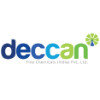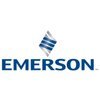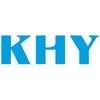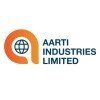Process Engineer
300+ Process Engineer Interview Questions and Answers

Asked in Deccan Fine Chemicals

Q. What could cause distillate product purity to change, assuming the same column, feed, and operating conditions?
Distillate product purity is influenced by factors such as feed composition, operating conditions, column design, and efficiency of separation processes.
Feed composition - The composition of the feed entering the distillation column will directly impact the purity of the distillate product.
Operating conditions - Factors such as temperature, pressure, and flow rates play a crucial role in determining the purity of the distillate product.
Column design - The design of the distil...read more

Asked in Le Mei Plastic Manufacturing

Q. What is APQP and where is it used. And how many phases does it have? and fmea which phase are performed?
APQP is Advanced Product Quality Planning used in automotive industry. It has 5 phases. FMEA is performed in the Design and Process phases.
APQP is a structured approach to product development and manufacturing.
It is used in the automotive industry to ensure quality and customer satisfaction.
APQP consists of 5 phases: Planning, Product Design, Process Design, Product and Process Validation, and Launch.
FMEA (Failure Mode and Effects Analysis) is performed in the Design and Proc...read more
Process Engineer Interview Questions and Answers for Freshers

Asked in Deccan Fine Chemicals

Q. How can the existing scrubber capacity be increased to handle higher capacities?
To increase scrubber capacity, consider upgrading equipment, optimizing process parameters, and expanding physical space.
Upgrade existing scrubber equipment to handle higher capacities
Optimize process parameters such as flow rates and chemical dosages
Expand physical space to accommodate larger scrubber units
Consider implementing advanced technologies like automation and monitoring systems
Consult with experts in the field for recommendations and best practices

Asked in Deccan Fine Chemicals

Q. How can the pump head be increased without modifying the existing pump?
To increase pump head without modifying existing pump, adjust system parameters like pipe diameter, pump speed, or impeller size.
Increase pump speed to increase head
Use a larger impeller to increase head
Reduce pipe diameter to increase head
Optimize system layout to reduce head losses
Asked in Osmoflo Engineering Services

Q. Why is cation exchange performed before anion exchange in ion exchange processes, and not the other way around?
Cation exchange is done first in ion exchange because cations are more easily exchanged than anions.
Cations have a higher affinity for the exchange resin than anions.
Cations are generally smaller in size and have a higher charge density, making them more easily exchanged.
Anions are larger and have a lower charge density, making them less easily exchanged.
Cation exchange is often used to remove heavy metal cations from water, while anion exchange is used to remove anions like ...read more

Asked in Deccan Fine Chemicals

Q. How do you measure the boiling point of an unknown liquid?
Boiling point of unknown liquid can be measured using a variety of methods including distillation, gas chromatography, and boiling point apparatus.
Use a distillation setup to heat the liquid and collect the vapor at different temperatures to determine the boiling point.
Perform gas chromatography to separate the components of the liquid and identify the boiling point of the unknown liquid.
Utilize a boiling point apparatus which heats the liquid gradually until it reaches its b...read more
Process Engineer Jobs




Asked in UPL

Q. How do you think you can contribute to UPL's growth?
I can contribute to UPL growth by utilizing my process engineering skills to optimize production processes and reduce costs.
Identifying areas for process improvement and implementing solutions
Collaborating with cross-functional teams to streamline processes
Analyzing data to identify trends and opportunities for optimization
Implementing cost-saving measures without compromising quality
Staying up-to-date with industry trends and advancements to ensure UPL remains competitive

Asked in Deccan Fine Chemicals

Q. What type of research areas are you interested in?
I am interested in research areas related to sustainable energy, process optimization, and materials science.
Sustainable energy
Process optimization
Materials science
Share interview questions and help millions of jobseekers 🌟


Asked in Aker Solutions

Q. Based on the points mentioned in your resume, can you draw a PFD or block diagram for the processes you have worked on, and answer questions about them?
Describing a Process Flow Diagram (PFD) for a chemical process I worked on, highlighting key components and operations.
Identified key process steps: feed preparation, reaction, separation, and product purification.
Used a continuous stirred-tank reactor (CSTR) for the reaction phase.
Incorporated heat exchangers for energy efficiency in the process.
Utilized distillation columns for separating products based on boiling points.
Implemented safety measures like pressure relief valv...read more

Asked in Deccan Fine Chemicals

Q. What is the orifice meter and different types of valves and distillation column..
An orifice meter is a device used to measure the flow rate of a fluid, while valves and distillation columns are important components in process engineering.
Orifice meter is a type of flow meter that uses a constriction in the flow path to create a pressure drop, which is then used to calculate the flow rate.
Different types of valves include gate valves, globe valves, ball valves, butterfly valves, and check valves. Each type has its own specific applications and characterist...read more

Asked in Cipla

Q. How do the P/V ratio and tip speed affect the selection of scale-up, and what criteria do you use for this selection?
P/V ratio and tip speed impact scale-up selection in process engineering.
P/V ratio affects the level of shear stress in the system, influencing mixing and reaction rates.
Higher tip speeds can lead to increased shear forces and heat generation, impacting product quality.
Selection criteria include desired mixing intensity, heat transfer requirements, and shear sensitivity of the product.
For example, in pharmaceutical manufacturing, a lower P/V ratio may be preferred for shear-s...read more

Asked in Yazaki

Q. How much electricity is available in the house?
The question is not relevant to the job position of Process Engineer.
The question is not related to the job responsibilities of a Process Engineer.
The amount of electricity available in a house is not relevant to the job.
The question may be better suited for an electrician or energy specialist.

Asked in KHY ELECTRONIC

Q. How much experience do you have in the mobile industry?
I have 5 years of experience in the mobile industry.
I have worked as a Process Engineer in a mobile manufacturing company for 5 years.
During my time in the mobile industry, I have gained expertise in optimizing manufacturing processes for mobile devices.
I have successfully implemented process improvements that resulted in increased efficiency and reduced costs.
I am familiar with the latest trends and technologies in the mobile industry, such as 5G and foldable displays.
I have...read more

Asked in Honeywell Uop

Q. How does a change in velocity affect flow in a venturimeter?
Velocity change affects flow in a venturimeter.
As velocity increases, pressure decreases and vice versa.
Flow rate is directly proportional to the square root of pressure difference.
Venturimeter is used to measure flow rate in pipes.
Flow rate can be calculated using Bernoulli's equation.

Asked in Aurigene Pharmaceutical Services

Q. What safety precautions should be taken during technology transfer?
Safety precautions during tech transfer
Ensure proper training of personnel involved in tech transfer
Perform risk assessments and implement appropriate control measures
Ensure proper documentation and communication between parties involved
Perform equipment and facility qualification before transfer
Ensure compliance with regulatory requirements
Perform validation of the transferred process
Ensure proper handling and disposal of hazardous materials
Perform regular audits and reviews...read more

Asked in JBF Industries

Q. What is pack pressure and how is it maintained for a specific denier throughout the process?
Pack pressure is the pressure applied to the polymer melt in the spinning pack during the fiber production process.
Pack pressure is crucial in determining the quality and properties of the final fiber product.
It is maintained by adjusting the screw speed and the size of the orifices in the spinning pack.
For a specific denier, the pack pressure should be optimized to achieve the desired fiber properties.
Throughout the production process, the pack pressure should be monitored a...read more

Asked in Deccan Fine Chemicals

Q. What are the different types of flow reactors?
Different types of flow reactors include continuous stirred tank reactors, plug flow reactors, and packed bed reactors.
Continuous stirred tank reactors (CSTR) have continuous flow and well-mixed contents.
Plug flow reactors have a uniform flow with minimal mixing.
Packed bed reactors contain catalyst particles packed in a bed through which the reactants flow.
Other types include tubular reactors, fluidized bed reactors, and membrane reactors.

Asked in Cipla

Q. What calculations do you perform when transferring a new product from the lab to the plant?
Calculations include scale-up factors, equipment sizing, material compatibility, process optimization, and cost analysis.
Determine scale-up factors to ensure the lab process can be replicated in the plant
Size equipment appropriately for the larger scale production
Check material compatibility with plant equipment and process conditions
Optimize the process parameters for efficiency and quality
Conduct cost analysis to determine the feasibility of production at scale

Asked in Cipla

Q. What is tip speed, and how do you calculate it from the laboratory to the pilot plant?
Tip speed is the speed at the outer edge of a rotating object, calculated by multiplying the radius by the angular velocity.
Tip speed is the speed at the outer edge of a rotating object.
It is calculated by multiplying the radius of the object by the angular velocity.
In the laboratory, tip speed can be calculated using the formula: Tip Speed = 2 * π * Radius * RPM.
In the pilot plant, the same formula can be used to calculate tip speed, but with the actual values of radius and ...read more
Asked in Ralson Carbon Black

Q. What is the valency of carbon? What are its atomic number and atomic mass?
Carbon has an atomic number of 6, atomic mass of 12.01, and a valency of 4.
Carbon has 4 valence electrons, allowing it to form 4 covalent bonds.
Its atomic number is 6, meaning it has 6 protons and 6 electrons.
Carbon's atomic mass is 12.01, which is the average mass of all its isotopes.
Carbon is a non-metal and is found in all living organisms.
Examples of carbon compounds include diamond, graphite, and methane.
Asked in Lummus Technology

Q. How do you set the operating pressure of a distillation column?
Operating pressure of distillation column is set based on the boiling points of the components being separated.
Determine the boiling points of the components being separated
Choose a pressure that will allow for the separation of the components
Consider the energy requirements and equipment limitations
Adjust the pressure as needed during operation
Monitor the temperature and pressure to ensure optimal performance
Asked in Ralson Carbon Black

Q. What is the difference between carbon and carbon black?
Carbon black is a form of carbon produced by incomplete combustion, while carbon is a chemical element found in various forms.
Carbon black is used as a pigment in inks, paints, and rubber products.
Carbon is used in various industries, including steel production and electronics.
Carbon black is produced by burning hydrocarbons with limited air supply.
Carbon can exist in different forms such as diamond, graphite, and amorphous carbon.
Carbon black is typically black in color and ...read more

Asked in Deep Industries

Q. What are the different types of relief valves, and how do you calculate their size?
Relief valves are of two types - pressure relief valves and safety relief valves. Their size is calculated based on the flow rate and pressure.
Pressure relief valves are used to protect equipment from overpressure and are typically set at a specific pressure level.
Safety relief valves are used as a last line of defense and are typically set at a higher pressure level than pressure relief valves.
The size of a relief valve is calculated based on the flow rate and pressure that ...read more

Asked in Asti Electronics India

Q. Why do we define profile travel time in different zones of the reflow process or wave soldering process?
Profile travel time is decided in different zones of reflow/wave soldering process to ensure proper heating and cooling for components.
Profile travel time is crucial for achieving proper soldering results.
Different zones in the process have different temperature requirements.
Travel time is adjusted to allow components to heat up and cool down gradually.
Proper profile travel time helps prevent defects like cold joints or overheating.
Examples: Preheat zone requires longer trave...read more

Asked in Cipla

Q. What are heat transfer and mass transfer, and what is their significance?
Heat transfer is the movement of heat from one place to another, while mass transfer is the movement of mass from one place to another. Both are important in various engineering processes.
Heat transfer involves conduction, convection, and radiation.
Mass transfer involves diffusion, convection, and molecular diffusion.
Significance of heat transfer includes maintaining temperature in chemical reactors, HVAC systems, etc.
Significance of mass transfer includes separation processe...read more
Asked in Osmoflo Engineering Services

Q. Explain the pump curve and describe the energy conversions that occur within a pump.
Pump curve shows the relationship between flow rate, pressure, and power. Mechanical energy is converted to hydraulic energy.
Pump curve is a graph that shows the performance of a pump at different flow rates and pressures.
It helps in selecting the right pump for a specific application.
The curve shows the relationship between flow rate, pressure, and power consumption.
Mechanical energy from the motor is converted to hydraulic energy by the pump.
The hydraulic energy is then use...read more

Asked in Aarti Industries

Q. How have you applied your knowledge of chemical engineering principles in the design and optimization of manufacturing processes?
I have applied my knowledge of chemical engineering principles in designing and optimizing manufacturing processes by analyzing reaction kinetics, heat transfer, and mass transfer.
Utilizing reaction kinetics to determine optimal reaction conditions for maximum yield
Applying heat transfer principles to design efficient heat exchangers for temperature control
Optimizing mass transfer processes to improve separation efficiency
Implementing process control strategies based on chemi...read more

Asked in Hrs Process System

Q. Explain the details of heat exchangers.
Heat exchanger is a device used to transfer heat between two or more fluids.
Heat exchangers are used in various industries such as chemical, petrochemical, power generation, and HVAC.
They can be classified into different types such as shell and tube, plate and frame, and spiral.
The fluids can be in direct contact or separated by a wall depending on the application.
Heat exchangers can be designed for different purposes such as heating, cooling, condensing, and evaporating.
Effi...read more

Asked in Wika Instruments India

Q. If you want to purchase a new machine, what technical parameters should be considered?
Key technical parameters to consider when purchasing a new machine include capacity, efficiency, reliability, and cost.
Capacity - Ensure the machine can handle the required workload
Efficiency - Look for energy-efficient machines to reduce operating costs
Reliability - Choose a machine with a proven track record for minimal downtime
Cost - Consider upfront cost as well as long-term maintenance expenses
Asked in Daurala Sugar Works

Q. How do you deal with process control to maximize production?
Implementing process control techniques like statistical process control, automation, and optimization to increase production efficiency.
Utilizing statistical process control methods to monitor and analyze production data in real-time
Implementing automation systems to streamline processes and reduce human error
Optimizing production parameters based on data analysis to maximize output
Regularly calibrating equipment and conducting maintenance to ensure consistent performance
Interview Questions of Similar Designations
Interview Experiences of Popular Companies






Calculate your in-hand salary
Confused about how your in-hand salary is calculated? Enter your annual salary (CTC) and get your in-hand salary


Reviews
Interviews
Salaries
Users










